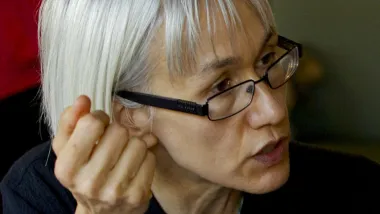In recent months many planning students have graduated and are moving on to the next phase of life—jobs, internships, fellowships, and such. For many this will involve a move to a new place. Even those staying in the same metropolitan area will seldom make it back to their planning program, and besides their fellow students will have scattered. Graduate school provides a peer group of those with similar interests and training. How do recent graduates create such a network when they are no longer in residence at a university?
In recent months many planning students have
graduated and are moving on to the next phase of life-jobs, internships,
fellowships, and such. For many this will involve a move to a new place. Even
those staying in the same metropolitan area will seldom make it back to their planning program, and besides their fellow students will have scattered. Graduate school
provides a peer group of those with similar interests and training. How do
recent graduates create such a network when they are no longer in residence at
a university? The following tips should help you start.
Join national and international organizations of planners and activists with common interests.
In an earlier posting I highlighted the work of Planners Network, the
Association for Community Design, and Architects, Designers and Planners for
Social Responsibility. There are similar small organizations in
topics from citizen participation (International Association for Public
Participation) to transportation.
Such organizations have web sites, newsletters, magazines, conferences, and other events that provide information and bring people together. While it is important to use these as places to affirm what you believe in or
who you are, I think it is also useful to find organizations that will
challenge you to be a better planner and a better person.
Join divisions of the American Planning Association (or the
equivalent where you are)-these are smaller groups that share a common interest
like transportation or new urbanism and are a good way to meet people. At one time I had been a member or all but
one or two of the APA divisions-a few new divisions have been subsequently
created so I can no longer say that. I joined a different one or two each year
including ones where I had no training and population based divisions where I
wasn't a member of that population. I didn't take a lot of airtime in those
divisions but rather tried to listen and learn. It is likely that in
one of these you'll find your niche. For members of under-represented groups
the population-based divisions of APA can be a really crucial source of support-by this
I mean the divisions Planning and the Black Community, Planning and Women, Gays
and Lesbians in Planning, Indigenous Planning, and Latinos and Planning. Students
can join divisions for $10 so they are well worth it.
Look for local groups working on an issue you believe in.
They can be useful too.
One can be in too many groups. I just left the Australian
Planning Institute where I was a corporate member (like AICP) and that I had
belonged to for more than two decades. This was mostly because I disagreed with
the way they'd implemented some membership changes and partly because one can
be in too many groups. And for much the same reason while I have a web site and
am a member of many groups I am not on Facebook, MySpace, LinkedIn or other
similar sites as faculty can be overwhelmed with requests to join networks of
this kind.
Overall, while making connections and having support are both important they are only a means to an end of doing good work. Make sure they don't get in the way of doing good planning and changing the world for the better.
I have been writing
this blog each month for almost two and a half years and have dealt with a set of issues including finding
out about planning, choosing and getting admitted to planning programs, key planning
skills, the exit project, information sources, and getting jobs. I'm looking
for new topics to cover in the next year. Suggestions for topics are welcome in the
comments area below.

Planetizen Federal Action Tracker
A weekly monitor of how Trump’s orders and actions are impacting planners and planning in America.

Chicago’s Ghost Rails
Just beneath the surface of the modern city lie the remnants of its expansive early 20th-century streetcar system.

Amtrak Cutting Jobs, Funding to High-Speed Rail
The agency plans to cut 10 percent of its workforce and has confirmed it will not fund new high-speed rail projects.

Ohio Forces Data Centers to Prepay for Power
Utilities are calling on states to hold data center operators responsible for new energy demands to prevent leaving consumers on the hook for their bills.

MARTA CEO Steps Down Amid Citizenship Concerns
MARTA’s board announced Thursday that its chief, who is from Canada, is resigning due to questions about his immigration status.

Silicon Valley ‘Bike Superhighway’ Awarded $14M State Grant
A Caltrans grant brings the 10-mile Central Bikeway project connecting Santa Clara and East San Jose closer to fruition.
Urban Design for Planners 1: Software Tools
This six-course series explores essential urban design concepts using open source software and equips planners with the tools they need to participate fully in the urban design process.
Planning for Universal Design
Learn the tools for implementing Universal Design in planning regulations.
Caltrans
City of Fort Worth
Mpact (founded as Rail~Volution)
City of Camden Redevelopment Agency
City of Astoria
City of Portland
City of Laramie





























